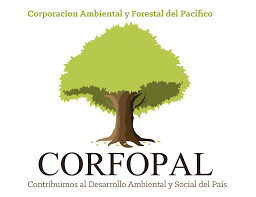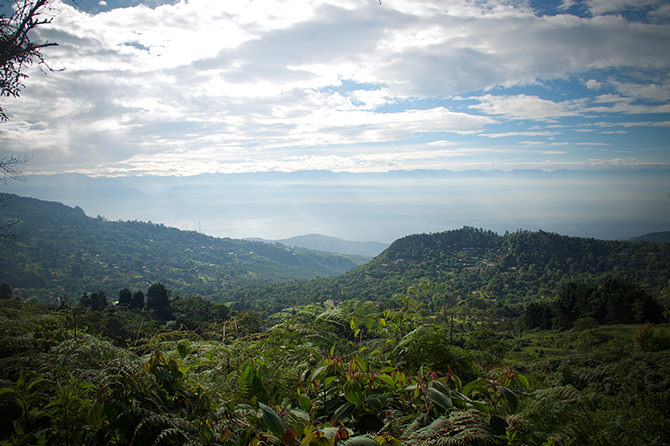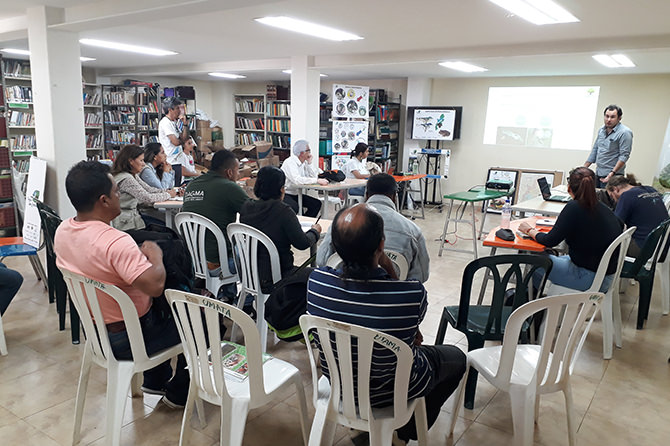2017 COLOMBIA
Resilience Level Assessment of the Key Biodiversity Areas San Antonio Forest/KM 18 and Community Empowerment on Conservation
Corporación Ambiental y Forestal del Pacífico (CORFOPAL)
Capacity building
Landscape
Overview
The San Antonio Forest (SAF) is a key biodiversity area (KBA) located in the Colombian Andes. This productive and biodiverse landscape generates a dynamic mosaic of ecosystems and land uses, providing a number of ecosystem services such as water regulation, carbon sequestration, fertile soils for food production and scenic beauty among others. Land use varies from residential areas (villages), farmlands, forests, pastures to private properties containing luxury country houses. However, despite this area connecting six protected areas, the laws that regulate the use and conservation of these areas are not respected by the inhabitants. As a result, the agricultural and livestock frontiers have expanded over the past few years, causing habitat loss and fragmentation of flora and fauna, and overpopulation of residents, which in turn have increased water pollution and threatened biodiversity. Despite these issues, the threats have not been properly quantified, and neither information on the status of the SEPLS, nor monitoring tools are available. In response to this problem, CORFOPAL had the following objectives:
1. Assess the resilience level of the KBA San Antonio Forest/KM 18 using the toolkit of Resilience Indicators proposed by UNU-IAS, Biodiversity International, IGES and UNDP (2014).
2. Build capacity, increase awareness about the value of biodiversity and the resilience of ecosystems and promote strengthening conservation techniques among the local communities and stakeholders.
3. Measure the capability of communities to build resilience and take advantage of ecosystem services through innovation, adaptation and collaboration with local institutions.
4. Get a better understanding of the strengths and weaknesses of the community associated with the San Antonio Forest, regarding their relationship with nature and human well-being.
To achieve these objectives, we successfully conducted the following activities:
- Identify the stakeholders of the SAF and develop a Toolkit for Indicators of Resilience tailored to the needs of the study area and the stakeholders.
- Conduct evaluation workshops on assessment of resilience indicators including participatory mapping, discussion, scoring, etc.
- Analyse the evaluation results.
- Conduct focus group discussions with community leaders, local NGOs, private companies and local governments to formulate “the SAF-KBA governance scheme”.
Key achievements
- Identified different stakeholders such as peasants, ranchers, large farmers, and wealthy landowners.
- Evaluated the resilience level of the SEPLS applying the Toolkit for Indicators of Resilience.
- Analysed the evaluation results in the categories of “Biodiversity (including agricultural biodiversity)”, “Knowledge and innovation”, “Governance and social equity”, and “Livelihoods and well-being”.
- Formulated “the SAF-KBA governance scheme” based on both national and international concepts, norms and policies, such as petition rights, territory ordering, incentives for conservation, and management of information to strengthen institutional governance.
Lessons
- To guarantee the conservation of the SAF-KBA, the ecological integrity of the present ecosystems must be ensured through the improvement of connectivity, and the reduction of pressures that lead to fragmentation and deteriorate the quality and quantity of ecosystem services.
- Interactions between humans and nature depend on the interests of the respective stakeholder, gender, and educational, socio-cultural and socio-economic levels.
- Nature is the source of life and the central axis to guarantee human well-being, as well as being production of income for all stakeholders.
- It is fundamental to guarantee the participation of different stakeholders in the concerned area to collect accurate information on social and environmental aspects and define the indicators in consensus.
Project location
Organisation

Corporación Ambiental y Forestal del Pacífico (CORFOPAL)
- Sector
- Non-governmental organisation
- Country
- Colombia
- Website/SNS
- https://corfopal.org/
Relevant projects
Projects of the same year
Aichi Biodiversity Targets
Aichi Biodiversity Targets
-
Awareness increased
-
Sustainable agriculture, aquaculture and forestry
Sustainable Development Goals
Sustainable Development Goals
-
Good health and well-being

